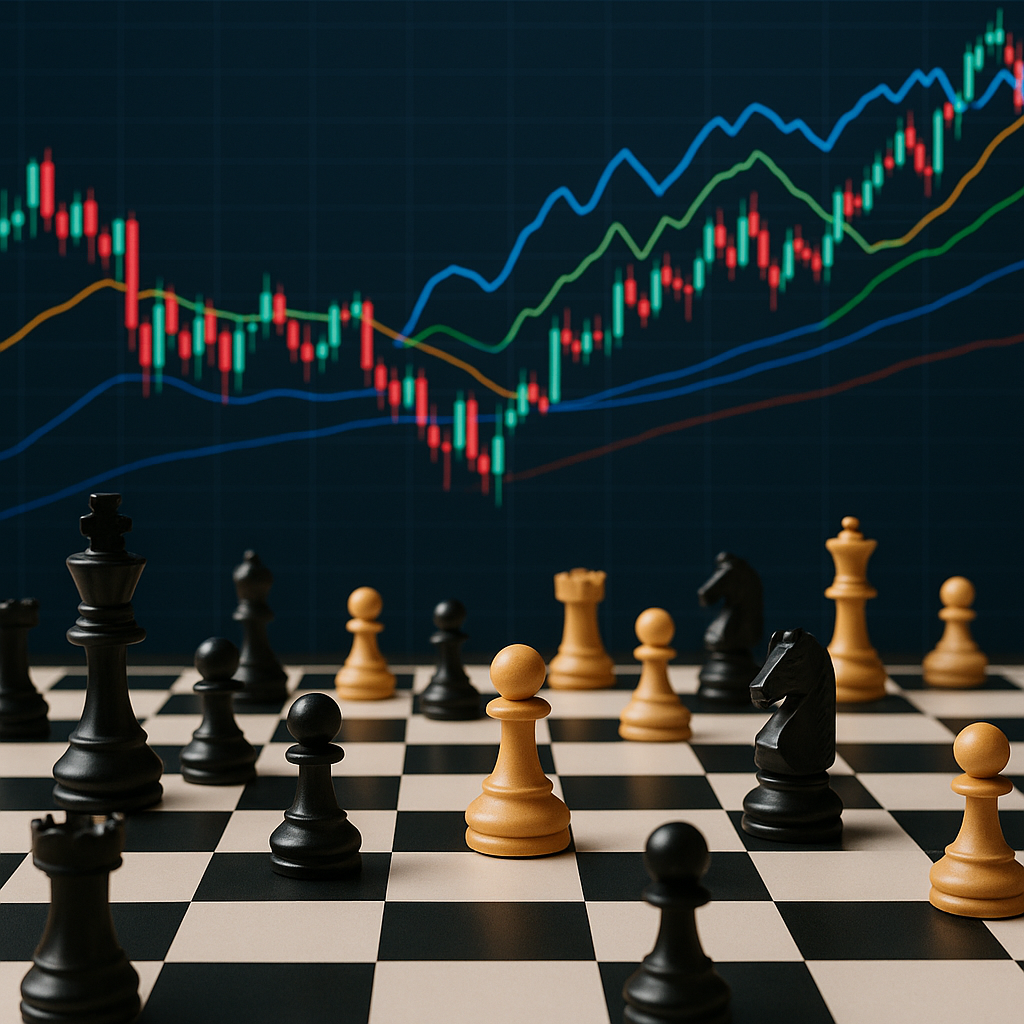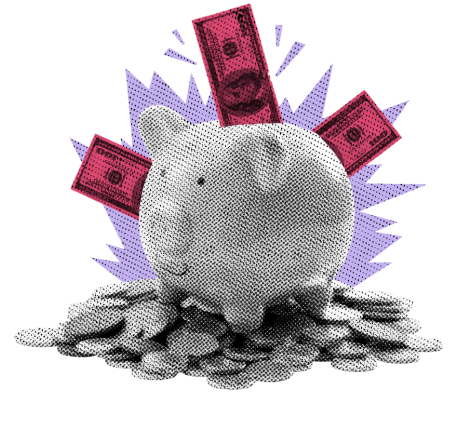How weaponized trade and monetary policy are shaping markets
KEY TAKEAWAYS
-
Tariffs have been weaponized faster and larger than markets expected
-
Trump is using aggressive public jawboning to push the Fed toward rate cuts
-
A vacant Fed seat from hawk Adriana Kugler’s resignation gives Trump an opening
-
Stephen Miran’s nomination could shift FOMC voting balance toward cuts
-
September’s Fed meeting could be one of the most pivotal in years
MY HOT TAKES
-
This isn’t just economics–it’s political chess
-
The Fed’s independence is being tested in real time
-
Markets may be underestimating the significance of the Miran nomination
-
Rate cuts will happen sooner if political maneuvering succeeds
-
The balance of power at the Fed is shifting faster than many realize
-
You can quote me: “The Fed may claim it’s independent–but the chessboard says otherwise.”
Dove takes hawk. If you’ve ever streamed one of those Washington DC suspense, drama, action, crime series, you know that the nation’s Capital can be a complicated environment to navigate. Though they are all fictions, most writers attempt to capture the more–let’s call them–shadowy aspects of government. Let’s just filter out all the conspiracy theory stuff for a moment and recognize that it is actually pretty complicated to run the government of the most powerful economic and military nation in the world. It is fair to say that there are lots of moving parts–constantly moving.
Let’s focus on economics for today–I am sure you are breathing a sigh of relief. 😆 Seriously, as we have learned in, say, the last six months or so, economics can be used as a potent weapon. The term “trade war” is nothing new. And by the way, it wasn’t invented in 2018 when President Trump launched his first salvo of tariffs on China. No, the terminology dates back to the late 1800s, which I can say confidently, predates even my wisest followers.
There were intense trade wars between France and England, and the US was “at war” with anyone trying to compete with US industry. Then Senator (and eventually President) William McKinley sponsored protectionist tariffs to protect American industry. The tariffs, which were as high as 48% were designed to make imported goods more expensive, causing American consumers to select US-produced products. Let’s not forget, that’s how tariffs work. The McKinley Tariffs trade dispute was not the first either, but it is the first in the historical timeline that leads up to where we are today.
Since then there was the Smoot-Hawly Tariff Act, the “Chicken War” (60s - 70s), US-Japanese trade disputes (70s - 80s), US-Europe aircraft and agriculture disputes (1980s), Bush (W) steel tariffs (2002), and Obama’s spat with China over tires. There was lots of history when Trump initiated his first trade war with China in 2018. It has always been complicated and delicate, but as you can see by my very, very brief history, the magnitudes of the conflicts declined over time, and the later ones were often settled by the WTO. Trump would change all that adding a new level of complexity and, of course, taking it to new levels of intensity.
Turning the clock forward to Trump’s current presidency, I am sure that absolutely no one anticipated the extent to which tariffs would be weaponized. To be clear, we all knew that there would be tariffs–Trump was clear in his campaign. However, the speed of deployment and sheer size of the tariffs that were collectively activated yesterday was, in my opinion, completely underestimated by the markets–prior to “Liberation Day,” that is. The good news for markets at least, is that it is no longer an unknown.
The VIX index which gauges market volatility–also known as the “fear” index–spent most of its time above 20 in March and April. It even spiked into the 50s before trending back down to where we are today, around 16. A rule of thumb is that anything above 20 is considered “volatile,” though I favor 18 as the borderline.
Another war has erupted in Washington DC since January, and this one is between the President and the Federal Reserve. With trade policy, the President weaponized tariffs and trade regulation. With the Fed, the President weaponized words. Side note: I used the term “weaponized” as a literal description not an editorialized description–the President is literally using tariffs to shape policy as he is using words to influence monetary policy.
In his war with the Fed, President Trump is not the first President to be at odds with monetary policymakers. Indeed, many Presidents have been at odds with the Fed since the FOMC came into existence in 1935. Harry Truman, Lyndon B. Johnson, Richard Nixon, Jimmy Carter, Ronald Reagan, and George H.W. Bush were all at odds with the Fed in one way or another. LBJ invited the Fed chair to his ranch blaming Vietnam war deaths on high interest rates. Nixon, infamously pressured then Chair Arthur Burns to keep rates low before the 1972 election. Many blame Burns’ compliance for the explosive inflation that followed.
As low interest rates are expansionary, one would expect that most presidents would favor accommodative monetary policy during their tenures–unless marred by inflation. That is where things get a bit tricky for President Trump. Of course, he would like low interest rates to power the economy forward. But alas, the country is still experiencing remnant inflation from the pandemic-era. Making matters far worse is the inflation that is expected to be caused by the President’s trade policy. It has already shown up on the margins and many expect their full effect to be felt later this year.
It gets trickier yet. The President doesn’t just “want” lower interest rates, he, in a way, needs lower interest rates. The administration has inherited a huge bill from the heavy-handed stimulus that followed COVID. The oversized deficit is being financed by debt which is more costly with higher interest rates. Lower interest rates would indeed serve to reduce the deficit, and the administration is keen on doing so. In case you are wondering, another big motivation is that recent tax cuts have simply exacerbated the deficit problem. In other words, lower interest rates could offset some of the deficit and actual costs of financing it.
It is mission critical. That is why the President has not spared any harsh criticism of what appears to be an actionless Fed. All those other Presidents who were at odds with their Feds employed various forms of jawboning (that’s the term Wall Street used to describe the verbal pressure). Some of it was private, and some public, though their public jawboning was low-intensity. President Trump turned it up to 11 in his current Presidency. We won’t get into the details, because we know. Has Trump been successful in his moral suasion campaign to get rates lower? Well, heretofore, no, not tangibly at least. Rates are still where they were when Trump took office in late January.
However, the President does appear to be making some headway, intangibly. Last week’s FOMC meeting had 2 dissenting votes–a rare occurrence that hasn’t happened in over three decades. The dissenters were Christopher Waller and Michelle Bowman. Both are known doves, but Waller is being considered as a potential successor to Chairman Powell. Knowing that he would surely not get that nomination without a dissent, one could argue that the President had some influence over Waller’s vote.
Completely unrelated, Fed Governor Adriana Kugler resigned earlier this week. Her term ends in January and she has cited interest in returning to academia as the reason. Kugler, a known inflation hawk, was appointed by Democratic President Joe Biden, so it is fair to rule out her departure as intentionally aiding Trump. However, her departure does advantage the President by opening a voting seat to be filled by a Trump nominee. We learned yesterday that the President has nominated Stephen Miran, the Chair of the Council of Economic Advisers. He is not just a Trump confidant but a key architect of the President’s trade policy. He is the author of a controversial paper entitled “A User’s Guide to Restructuring the Global Trading System” in which he proposed the much-criticized “Mar-a-Lago” accord.
Miran needs Senate approval which can take 4-6 weeks at minimum, so he would not likely be installed by the September FOMC meeting. Should he be, I think it's fair to assume that he would vote in favor of rate cuts. Where does that leave September’s FOMC?
Known doves include Waller, Bowman, Goolsbee, Cook, Jefferson, and Barr. Hawks include Musalem, Schmid, Williams, and Collins. Powell, who only gets 1 vote is considered slightly dovish though he has been spotted hawking about lately. So, 6 potential votes for cuts and 7 if Miran makes it in under the wire, and 4 votes to hold off on cuts with a likely 5th from Powell. Kugler’s absence could have been the 6th and tying vote. I would say that September’s meeting is going to be… er, lively, given recent, apparent weakness in the employment situation and launching of the so-called reciprocal tariffs.
Stepping back, it is clear that, despite all the harsh words flying around the nation’s capitol, pieces are being maneuvered all over the board in this very complicated game of economic chess. Folks, this game is far from over, and its winner is not at all clear yet. Watch carefully, because things are getting trickier by the day.
YESTERDAY’S MARKETS
Stocks had a mixed close and the S&P 500 blew an early gain as investors expressed anxiety over the ever-changing and heating-up trade battles between the US and the rest of the world. Markets are trying to guess what the President has in store for his Fed nominees, wondering what it all means–anxiety ensues.


.png)

